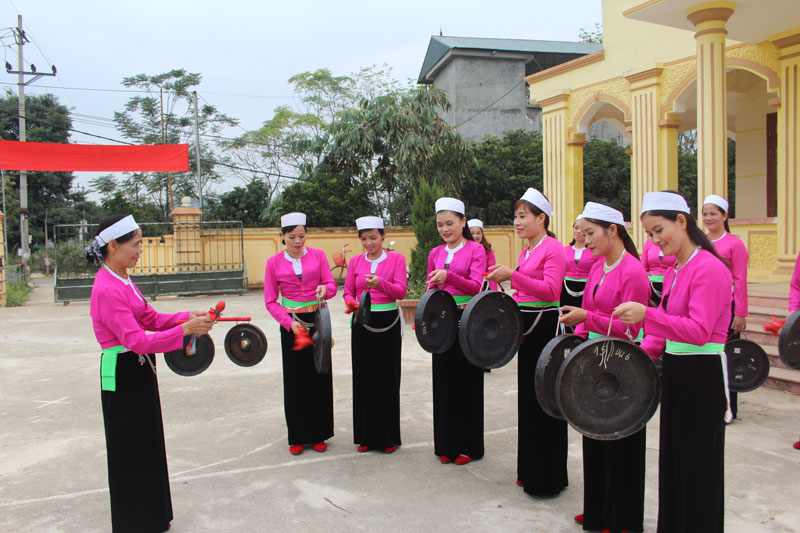



The old
artists of Muong Gong team, Du 6 village, Mong Hoa commune (Ky Son) teaching
the old gong songs for the young generation.
Muong ethnic
people in Mong Hoa Commune currently store a lot of material and intangible
cultures which are rich and various. In addition to the beauty of the costume,
language, customs and habits, the people here still consider gongs as an
indispensable part of the spiritual life of Muong ethnic people. Gongs have
appeared in all the activities of the people’s life. At present, the number of
gong artists in the area of Mong Hoa commune is more than 50 people and there
are 4 villages to set up gong teams which are active in practicing their
performances in the big festivals of the year. That are villages of Du 5, Du 6,
7A and 7B.
The gong team of
Du 6 village was established in 2010. Only beginning with the passion of
traditional musical instruments, the team went to every household to borrow the
gongs for practice. Mme. Nguyen Thi Le Sinh, one of the initial key members
shared: When I was at the age of 13, I have followed my aunts, my grandmothers
to watch the gong performances in the large festivals in the village. Since
then, I was "deeply in love” and passionate with our hometown gong echo. When
the gong team of Du 6 village was founded, we could participate in opening the
class to teach how to play traditional gongs of Muong ethnic minority. At
first, only 12 main members of the team were being taught. After some time, we
noticed that many young ladies in the village wanted to attend, we opened one
more class to teach for about 30 people and we were presented 6 gongs. The
people in the village contributed to buying a gong sets of 12 gongs for the
team to perform.
The gong team of
Mong Hoa commune has been developing strongly, is one of the main teams of the
district to perform at the large festivals of the province. Their achievements
include the second prize of the National gong performance competition in Hoa
Binh in 2009, the latest first prize of Muong gong festival in the anniversary
of 130 years’foudation of the province. This is an opportunity for the artists
to exchange the knowledge, improve the profession, contribute to the
maintenance and development of traditional art values of the ethnic minority.
The ancient gong
songs, such as Moong, charms, walking,etc are always the main songs that the
commune perform at the festivals. Each song has different ways of beating but
there is a harmony among the gongs in the set. According to the shares of the
artists, Moong Muong gong song is the most difficult one to beat because this
song is very long, specially one player uses his hands to shake 2 gongs at the
same time. This could only be beated by the very experienced artists with a lot
of skills. At present, the old artists are teaching three young artists how to
play this song.
For Muong ethnic
people in Mong Hoa commune, gong culture is considered as an indispensible
cultural identity in their daily life. Therefore, the protection, as well as
the development is extremely meaningful, contributing to improve the spiritual
life of the local ethnic people.